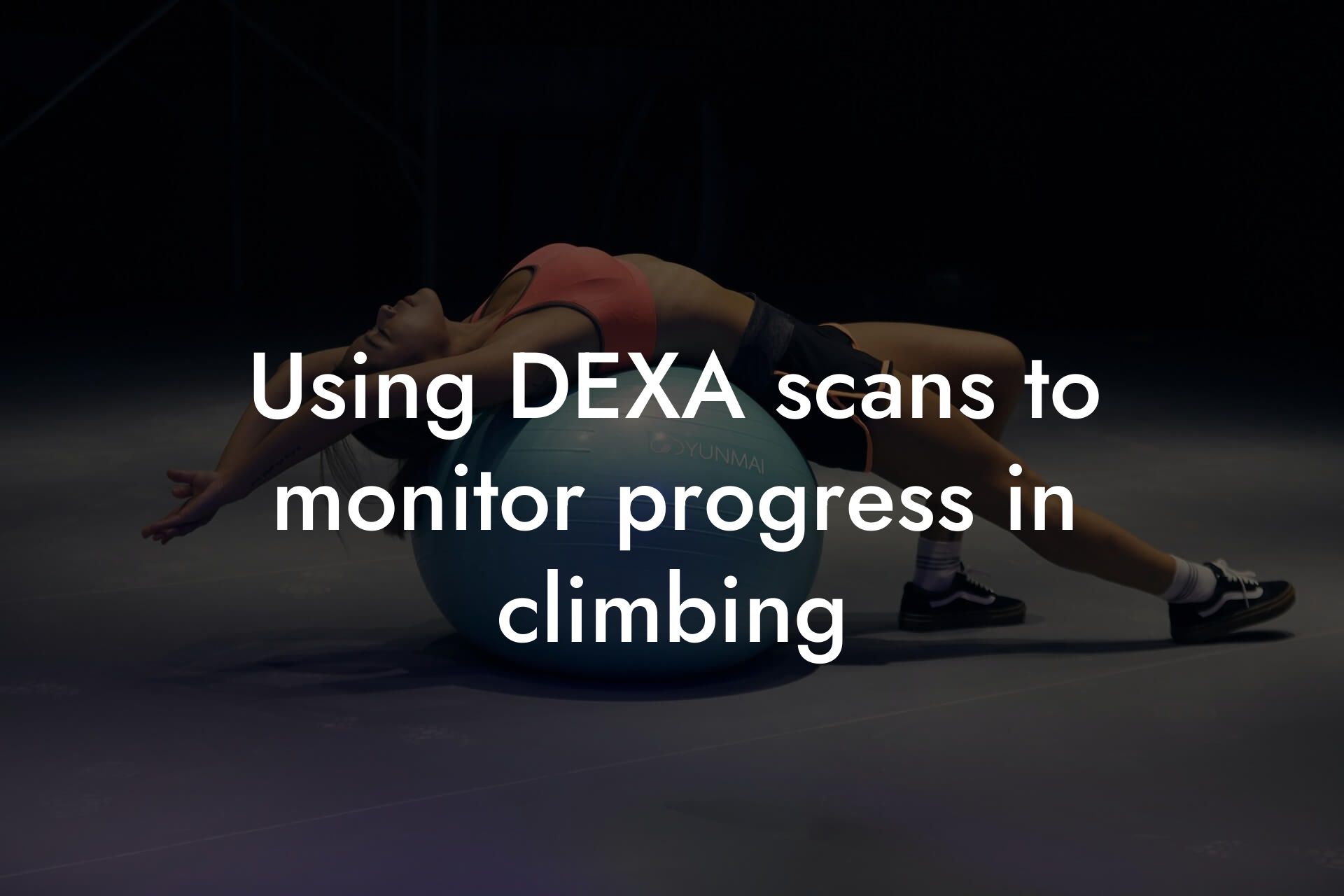As a climber, achieving a balance between strength, endurance, and flexibility is crucial for optimal performance and injury prevention. Climbing requires a unique combination of physical abilities, and neglecting any one of these essential components can lead to plateaus, fatigue, and increased risk of injury. In this article, we'll delve into the importance of balancing strength, endurance, and flexibility in climbing, and provide you with practical tips and exercises to help you achieve a well-rounded fitness level.
Table of Contents
Understanding the Demands of Climbing
Climbing is a physically demanding activity that requires a combination of strength, power, endurance, and flexibility. Climbers need to be able to generate force to pull themselves up, maintain posture, and support their body weight. They must also possess the endurance to sustain efforts over extended periods, as well as the flexibility to move efficiently and maintain proper technique. A climber's fitness level is critical to their performance, and neglecting any one of these components can lead to decreased performance and increased risk of injury.
The Importance of Strength in Climbing
Strength is a critical component of climbing fitness, as it enables climbers to generate the force needed to pull themselves up and support their body weight. Climbers need strength in their fingers, arms, shoulders, and core to maintain good posture and generate power. A strong climber can maintain a high intensity over a longer period, allowing them to complete more challenging routes and recover more quickly between climbs.
A well-rounded strength training program for climbers should include exercises that target the fingers, forearms, biceps, triceps, shoulders, and core. Examples of effective strength training exercises for climbers include:
- Fingerboard training
- Weightlifting (e.g., pull-ups, deadlifts, bench press)
- Bodyweight exercises (e.g., push-ups, dips, planks)
- Resistance band training
The Role of Endurance in Climbing
Endurance is another critical component of climbing fitness, as it enables climbers to sustain efforts over extended periods. Climbers need endurance to recover between climbs, maintain a high intensity over a longer period, and complete more challenging routes. Endurance training helps climbers build their anaerobic capacity, allowing them to recover more quickly between climbs and maintain a high level of performance.
A well-rounded endurance training program for climbers should include exercises that target the cardiovascular system, as well as the muscles used in climbing. Examples of effective endurance training exercises for climbers include:
- Cardiovascular exercises (e.g., running, cycling, swimming)
- High-intensity interval training (HIIT)
- Endurance climbing (e.g., long routes, multiple laps)
- Strength training with lighter weights and higher reps
The Importance of Flexibility in Climbing
Flexibility is a critical component of climbing fitness, as it enables climbers to move efficiently and maintain proper technique. Climbers need flexibility in their shoulders, elbows, wrists, and fingers to maintain good posture and generate power. Flexibility also helps climbers to recover more quickly between climbs and reduce their risk of injury.
A well-rounded flexibility training program for climbers should include exercises that target the shoulders, elbows, wrists, and fingers. Examples of effective flexibility training exercises for climbers include:
- Static stretches (e.g., shoulder stretches, wrist stretches)
- Dynamic stretches (e.g., arm circles, finger spreads)
- Yoga or Pilates exercises
- Foam rolling and self-myofascial release
Periodization and Training Phases
To achieve a balance between strength, endurance, and flexibility, climbers should incorporate periodization and training phases into their training program. Periodization involves alternating between periods of intense training and periods of recovery, while training phases involve focusing on specific components of fitness (e.g., strength, endurance, flexibility) during different times of the year.
A typical training program for climbers might include:
- A strength-focused phase during the off-season (e.g., winter)
- An endurance-focused phase during the pre-season (e.g., spring)
- A flexibility-focused phase during the in-season (e.g., summer)
- A recovery phase during the post-season (e.g., fall)
Incorporating Balance and Coordination Exercises
Balance and coordination exercises are critical components of a well-rounded climbing training program. These exercises help climbers develop their proprioception (awareness of body position and movement), improve their overall athleticism, and reduce their risk of injury. Examples of effective balance and coordination exercises for climbers include:
- Balance boards or BOSU ball training
- Single-leg squats or single-arm hangs
- Core exercises (e.g., planks, side planks)
- Agility drills (e.g., ladder drills, cone drills)
Monitoring Progress and Avoiding Plateaus
To achieve a balance between strength, endurance, and flexibility, climbers must monitor their progress and avoid plateaus. This can be achieved by:
- Tracking training data (e.g., weight lifted, distance climbed)
- Conducting regular fitness assessments (e.g., DEXA scans)
- Adjusting training programs based on progress and goals
- Incorporating new exercises and training methods
Achieving a balance between strength, endurance, and flexibility is critical for optimal performance and injury prevention in climbing. By incorporating a well-rounded training program that includes strength, endurance, flexibility, balance, and coordination exercises, climbers can improve their overall fitness level and achieve their goals. Remember to monitor progress, avoid plateaus, and adjust training programs based on goals and progress. With dedication and consistency, climbers can achieve a high level of fitness and take their climbing to the next level.
Frequently Asked Questions
What is the importance of balancing strength, endurance, and flexibility in climbing?
As a climber, it's essential to have a well-rounded physical fitness profile that includes strength, endurance, and flexibility. Strength helps you to generate power and overcome obstacles, endurance enables you to sustain efforts over time, and flexibility allows you to maintain proper technique and prevent injuries. By balancing these three components, you'll be able to climb more efficiently, effectively, and safely.
How does strength training benefit climbing performance?
Strength training specifically targets the muscles used in climbing, such as the fingers, arms, shoulders, and legs. By building strength in these areas, you'll be able to generate more power, hold onto smaller holds, and recover more efficiently between climbs. Additionally, strength training can help improve your overall muscle mass, which can enhance your climbing endurance.
What types of exercises are best for building strength for climbing?
A well-rounded strength training program for climbing should include a mix of exercises that target different muscle groups. Some effective exercises include fingerboard training, campus boards, pull-ups, push-ups, squats, lunges, and deadlifts. It's also essential to incorporate exercises that target the core and shoulders, such as planks, rows, and shoulder presses.
How can I improve my endurance for climbing?
Endurance training for climbing involves building your capacity to sustain efforts over time. This can be achieved through cardiovascular exercises such as running, cycling, or swimming, as well as specific climbing-related exercises like hangboards, campus boards, and longer climbs. It's also essential to incorporate rest and recovery days to allow your body to adapt to the demands of climbing.
What is the role of flexibility in climbing?
Flexibility is critical in climbing, as it allows you to maintain proper technique, prevent injuries, and move efficiently on the wall. Good flexibility enables you to reach and stretch for holds, as well as maintain a comfortable and efficient body position. Incorporating stretching exercises, such as hamstring and hip flexor stretches, can help improve your flexibility and overall climbing performance.
How can I incorporate flexibility exercises into my climbing training?
Incorporating flexibility exercises into your climbing training can be as simple as adding a few minutes of stretching to your warm-up or cool-down routine. Focus on exercises that target the major muscle groups used in climbing, such as the hamstrings, hip flexors, and shoulders. You can also incorporate dynamic stretching exercises, such as leg swings and arm circles, to help improve your range of motion and prepare your muscles for climbing.
What is the ideal balance between strength, endurance, and flexibility for climbing?
The ideal balance between strength, endurance, and flexibility for climbing will vary depending on your individual goals, climbing style, and experience level. However, a general rule of thumb is to allocate 40-50% of your training time to strength training, 30-40% to endurance training, and 10-20% to flexibility and mobility exercises. Remember to listen to your body and adjust your training program as needed to avoid imbalances and prevent injuries.
How can I assess my current level of strength, endurance, and flexibility for climbing?
Assessing your current level of strength, endurance, and flexibility for climbing involves evaluating your performance in each area. You can use metrics such as your maximum pull-up capacity, hang time, or climbing route difficulty to assess your strength. Endurance can be evaluated by tracking your heart rate, pace, or overall climbing time. Flexibility can be assessed through range of motion tests, such as measuring your shoulder flexion or hip flexor range. Use these assessments to identify areas for improvement and adjust your training program accordingly.
What are some common mistakes climbers make when training for strength, endurance, and flexibility?
Common mistakes climbers make when training for strength, endurance, and flexibility include overemphasizing one area over others, neglecting proper warm-up and cool-down routines, and failing to incorporate rest and recovery days. Additionally, climbers may focus too much on building raw strength without developing the endurance and flexibility needed to sustain efforts over time. A well-rounded training program that balances strength, endurance, and flexibility is essential for optimal climbing performance.
How can I avoid plateaus in my climbing performance?
Avoiding plateaus in climbing performance involves continuously challenging yourself and varying your training program. This can be achieved by incorporating new exercises, changing your climbing routes or terrain, or adjusting your training intensity and volume. Additionally, incorporating rest and recovery days, as well as actively seeking feedback from coaches or training partners, can help identify areas for improvement and prevent plateaus.
What is the importance of proper nutrition and hydration for climbing performance?
Proper nutrition and hydration are critical for optimal climbing performance. A well-balanced diet that includes plenty of protein, complex carbohydrates, and healthy fats can help support muscle growth and recovery. Adequate hydration is also essential, as even mild dehydration can significantly impair climbing performance. Aim to drink at least 8-10 glasses of water per day, and make sure to fuel your body with a balanced meal or snack within 30-60 minutes after climbing.
How can I optimize my rest and recovery for climbing?
Optimizing rest and recovery for climbing involves actively prioritizing rest days, incorporating stretching and foam rolling, and getting adequate sleep. Aim for 7-9 hours of sleep per night, and take rest days as needed to allow your body to recover from the physical demands of climbing. Additionally, incorporating activities like yoga, meditation, or reading can help reduce stress and promote overall recovery.
What are some common injuries associated with climbing, and how can I prevent them?
Common injuries associated with climbing include finger injuries, shoulder strains, and knee sprains. These injuries can be prevented by incorporating proper warm-up and cool-down routines, building strength and endurance gradually, and taking regular rest and recovery days. Additionally, using proper climbing technique, wearing appropriate gear, and climbing within your ability level can help reduce the risk of injury.
How can I stay motivated and engaged in my climbing training?
Staying motivated and engaged in climbing training involves setting realistic goals, finding a training partner or community, and incorporating variety into your training program. Celebrate your achievements, no matter how small, and don't be afraid to take rest days or modify your training program as needed. Additionally, incorporating activities like climbing competitions, outdoor climbing trips, or climbing-related workshops can help keep your training fresh and exciting.
What are some common myths about climbing training, and how can I avoid them?
Common myths about climbing training include the idea that more is always better, or that strength training will make you too bulky for climbing. These myths can be avoided by staying informed, seeking guidance from experienced coaches or trainers, and focusing on a well-rounded training program that balances strength, endurance, and flexibility.
How can I incorporate climbing-specific training into my overall fitness routine?
Incorporating climbing-specific training into your overall fitness routine involves allocating dedicated time to climbing-related exercises and activities. This can include strength training exercises, endurance training, flexibility exercises, and climbing-specific drills. Aim to incorporate climbing-specific training 2-3 times per week, and adjust your overall fitness routine accordingly to ensure a balanced and well-rounded approach to training.
What are some effective ways to track my progress and measure my success in climbing?
Effective ways to track progress and measure success in climbing include tracking your climbing route difficulty, hang time, or maximum pull-up capacity. You can also track your heart rate, pace, or overall climbing time to measure endurance. Additionally, taking progress photos, tracking your body fat percentage, or monitoring your overall muscle mass can help measure success in terms of physical appearance and physique.
How can I stay safe while climbing, and what precautions should I take?
Staying safe while climbing involves taking necessary precautions, such as wearing appropriate gear, inspecting equipment regularly, and climbing within your ability level. Additionally, incorporating proper warm-up and cool-down routines, staying hydrated, and taking regular rest breaks can help reduce the risk of injury. Always climb with a partner, and make sure to communicate clearly and effectively to ensure a safe and successful climb.
What are some common mistakes beginners make when starting a climbing training program?
Common mistakes beginners make when starting a climbing training program include overestimating their abilities, neglecting proper warm-up and cool-down routines, and failing to incorporate rest and recovery days. Additionally, beginners may focus too much on building raw strength without developing the endurance and flexibility needed to sustain efforts over time. A well-rounded training program that balances strength, endurance, and flexibility is essential for optimal climbing performance.
How can I find a climbing community or training partner to support my training?
Finding a climbing community or training partner can be achieved by joining a local climbing gym, attending climbing events or competitions, or connecting with other climbers online. Having a supportive community or training partner can help keep you motivated, provide valuable feedback and guidance, and enhance your overall climbing experience.
What are some effective ways to manage stress and anxiety while climbing?
Effective ways to manage stress and anxiety while climbing include incorporating relaxation techniques, such as deep breathing or visualization, into your pre-climb routine. Additionally, focusing on proper technique, staying present in the moment, and breaking down climbs into smaller, manageable sections can help reduce stress and anxiety. Remember to prioritize self-care, get adequate sleep, and take regular rest breaks to help manage stress and anxiety.
Here are some related articles you might love...
- The role of lean muscle mass in climbing strength
- Using DEXA scans to monitor progress in climbing
- The impact of body composition on climbing performance
- Nutrition strategies for sustained energy during climbs
- Off-season training strategies for climbers
- Recovery techniques for climbers after intense sessions
- Strength training programs for amateur climbers
- Reducing body fat for better climbing efficiency
- Bone density and injury prevention in climbing
Zak Faulkner
Zak Faulkner is a leading authority in the realm of physical health and body composition analysis, with over 15 years of experience helping professionals optimise their fitness and well-being. As one the experts behind Tano Performance Group, Zak has dedicated his career to providing in-depth, science-backed insights that empower clients to elevate their physical performance and overall health.
With extensive knowledge of DEXA technology, Zak specializes in delivering comprehensive body assessments that offer precise data on body fat, muscle mass, bone density, and overall physique. His expertise enables individuals to make informed decisions and achieve their fitness goals with accuracy and confidence. Zak’s approach is rooted in a deep understanding of human physiology, combined with a passion for helping clients unlock their full potential through personalised strategies.
Over the years, Zak has earned a reputation for his commitment to excellence, precision, and client-focused service. His guidance is trusted by top professionals who demand the best when it comes to their health. Whether advising on fitness programs, nutritional strategies, or long-term wellness plans, Zak Faulkner’s insights are a valuable resource for anyone serious about taking their health and fitness to the next level.
At Tano Performance Group, Zak continues to lead our Content Team revolutionising how professionals approach their physical health, offering unparalleled expertise that drives real results.




